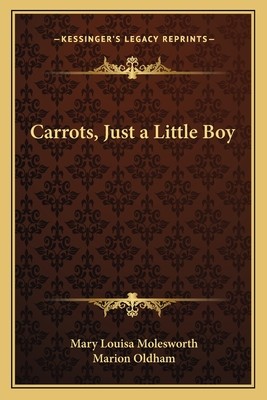
- We will send in 10–14 business days.
- Author: Mary Louisa Molesworth
- Publisher: Kessinger Publishing
- ISBN-10: 116272126X
- ISBN-13: 9781162721262
- Format: 15.2 x 22.9 x 1 cm, softcover
- Language: English
- SAVE -10% with code: EXTRA
Reviews
Description
1926. Mary Louisa Molesworth typified late Victorian writing for girls. Aimed at girls too old for fairies and princesses but too young for Austen and the Brontes, books by Molesworth had their share of amusement, but they also had a good deal of moral instruction. Molesworth's stories followed a formula where the heroine of the story, usually a middle-class girl, would learn the value of helping girls less fortunate than herself. Contents: Floss's Baby; Six Years Old; Plans: The Lost Half-Sovereign; Carrots in Trouble; Carrots All Right Again; A Long Ago Story; The Bewitched Tongue; Sybil; A Journey and Its Ending; Happy and Sad; The Two Funny Little Trots; and Good Endings.
EXTRA 10 % discount with code: EXTRA
The promotion ends in 18d.07:42:59
The discount code is valid when purchasing from 10 €. Discounts do not stack.
- Author: Mary Louisa Molesworth
- Publisher: Kessinger Publishing
- ISBN-10: 116272126X
- ISBN-13: 9781162721262
- Format: 15.2 x 22.9 x 1 cm, softcover
- Language: English English
1926. Mary Louisa Molesworth typified late Victorian writing for girls. Aimed at girls too old for fairies and princesses but too young for Austen and the Brontes, books by Molesworth had their share of amusement, but they also had a good deal of moral instruction. Molesworth's stories followed a formula where the heroine of the story, usually a middle-class girl, would learn the value of helping girls less fortunate than herself. Contents: Floss's Baby; Six Years Old; Plans: The Lost Half-Sovereign; Carrots in Trouble; Carrots All Right Again; A Long Ago Story; The Bewitched Tongue; Sybil; A Journey and Its Ending; Happy and Sad; The Two Funny Little Trots; and Good Endings.


Reviews